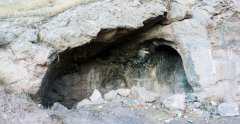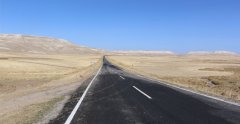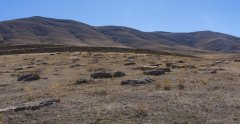Creative and Adaptive Reuse of Sites of Memory project’s last field study stop was Sivas. After our first visit to Sivas in the scope of this project in November 2016, we were in Sivas to work on cultural heritage this time between September 28 and October 20.
The cultural heritage approach to the rural-urban divide that we developed during our field works in Adana and Develi, was also observed in Sivas. After looking for the Armenian culture in Sivas, we traced the disappearance of the streams, mills, bridges, churches and the schools. We observed how these places surprisingly fit into the old descriptions. The few witnesses of Sivas of the past, houses that still stand and the monumental architecture that are being reused for different purposes, try to resist the rapid urban transformation.
We enjoyed the support of Istanbul’s Association of Sivas Armenians and Friends and the Architecture Department of Cumhuriyet University. We were able to gather information on Sivas’s past and present through city tours, literature reviews, map overlays and workshops.
The other phase of the field work was the study of the cultural heritage in 120 villages, covering all of the Sivas Province, the second largest in Turkey by 28 thousand square kilometers. During most of this phase as well, we had the chance of enjoying the companionship of the Association of Sivas Armenians and Friends. In general, from the provincial governorship to the district governorates, the municipalities and local authorities, but most importantly the residents of the villages and neighborhoods contributed to our study. Our field work in Sivas was more participatory than in Adana and Kayseri, and the benefits of this approach is already visible. Taking the Turkey Cultural Heritage inventory as our basis, we had aimed at finding 320 places. Thanks to the participatory experience, were able to spot two thirds of this figure.

To be able to observe the cultural diversification of Sivas, one needs to travel from Suşehri to Şarkışla, from Hafik to Gürün and from Yıldızeli to Zara. The Seljukian Province of Rum, the Little Armenia of Byzantium and the Ottoman Vilayet of Sivas when seen as one unit, when the diversification is seen as only subcategories of one center, will not only be doing injustice, will even be incorrect.
A unique place with its geographical-cultural particularities, Divriği was the last stop of the field work. The Doğa Derneği, with whom we also collaborated in Adana’s Aladağ field work, was with us as we explored the cultural heritage-nature exchange relationship. From one side we were captivated by Divriği’s nature, mountains, springs and forests, from another we were saddened to find that traditional agriculture techniques are completely vanished. Despite that, we think the revival of these techniques is not impossible, because the habit of gathering wild berries is still practices and the demand for products that come from traditional agriculture is not little.
Because the Divriği castle and the Divriği Great Mosque and Hospital, a site in the UNESCO World Heritage List, were under renovations, we could not include them in our study. However, we looked for methods of reuse of Surp Asdvadzadzin Armenian Church that stand with its four walls and three apses and the remaining single wall of Surp Kevork church. These two sites are in the immediate proximity of the mentioned monuments, but are left out of the renovation efforts. We had the chance of discussing the reuse scenarios in discussion meeting with the Divriği Cultural Association, Divriği Women Association, Divriği Municipality and other interested individuals. These discussions will no doubt have important impact on our future steps.
Next to our research activities, we continued conducting oral history interviews. We are aware that in-depth interviewing will enrich our study in all its phases. The information formed out of these interviews will elevate out cultural heritage understanding, as well as be open to researchers through the Foundation’s oral history archives based on certain regulations. Similar to Adana and Kayseri, we conducted oral history workshops with university students both in Divriği and in central Sivas.
As we spent three weeks in Sivas, we cannot thank enough the students and professors who participated in our workshops, the villagers who guided our roads and shared their knowledge, the employees of the local authorities who rushed to help us and the experts who joined us in Sivas. We strongly believe that only through this kind of participatory and mutually supportive approach can collect the valuable understanding we were able to fold.






